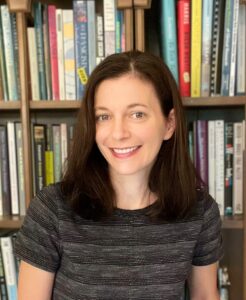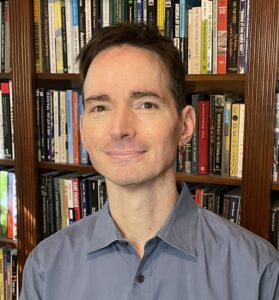To raise awareness and assist couples with job searches, UNC-Chapel Hill researchers launched an evidence-based tool showing how research-intensive institutions rank in partner hiring – providing insights on where they may be excelling and where they may be deficient. Jill Fisher, PhD, professor of social medicine at the UNC School of Medicine, co-led the project.
It’s the end of graduate school training, fellowships, internships, postdocs and more. You and your partner have earned doctorate degrees and it’s time to land a job…together. The question arises, “Is partner hiring an option?”
Dual careers have become both a personal goal and an economic necessity for many couples, particularly when academic employment requires scholars to relocate away from loved ones, family and social circles. Some institutions may or may not support partner hiring – the creation of a faculty position, which may be tenure-stream or fixed-term, for the academic partner of a candidate who has been offered a tenure-stream faculty position. However, meeting the needs of dual-career academic couples is important, especially when considering the wellbeing of those individuals and their families. Navigating which institutions might support partner hires, under what circumstances, and how to go about obtaining those jobs are all challenges couples can face, but there’s one new evidenced-based tool researchers at UNC-Chapel Hill recently developed to address dual-career issues.

The Partner Hire Scorecard, the result of a research study funded by the National Science Foundation, provides information about the dual-career approaches of R1 universities (doctoral universities with very high research activity) in the United States. Its purpose is to rank institutions by their partner-friendly status. Its goal is to empower academic couples in their job searches and to encourage universities to support couples more fully.
Led by principal investigators Jill A. Fisher, PhD, professor of social medicine and member of the Center for Bioethics at the UNC School of Medicine, and Torin Monahan, PhD, professor of communication at the UNC College of Arts and Sciences, the scorecard is a product of a larger research study on the challenges faced by academic couples: The Dual-Careers Project.
“Previous studies have indicated that more than one-third of university faculty have a spouse or partner who is also an academic,” said Fisher. “For universities’ part, they may fail to recruit or retain scholars when they provide no institutional support for academic couples.”

“Over the years, I’ve had many graduate students ask me about how to manage their careers with their partners who are also academics,” said Monahan. “They are understandably anxious about planning for their futures, and they’re often not sure how to best go about doing that. A big source of anxiety is their uncertainty about how universities might respond to their dual-career needs. This was a primary motivator for us doing this research study.”
To meet the needs of academic couples in their quest for partner hires, the researchers systematically collected and analyzed publicly available documents pertaining to dual-career issues at all 146 R1 universities from July 2023 to October 2023. They found that 63% of these institutions had information suggesting that they could create faculty positions of some sort to support partner hiring. That said, only 55% of institutions with available partner-hire information and 77% of the institutions that had processes for creating faculty positions specified that those could be tenure-track positions. The study also said that most institutions that described their resources for dual-career couples (63%) also had provisions to facilitate non-faculty positions for partner hires at those institutions. In our state, researchers found that UNC-Chapel Hill and NC State University created faculty positions; however, Duke University did not.
“We reviewed all the materials we found on these institutions’ websites, developed a scoring rubric, then scored all the institutions,” said Fisher. “We used these scores to make a ranking of all the institutions. The results of that ranking are available on our scorecard website and in an accompanying report.”
The researchers also found key patterns in the data. The study showed that substantially more public universities created faculty positions of some sort for partners than did private universities (82% for public, 41% for private). Universities in the Northeast were not as supportive as universities elsewhere in the country: 46% of universities in the Northeast created faculty positions for partner hires compared to 86% of universities in the West, 81% in the South, and 76% in the Midwest. Universities that had received National Science Foundation (NSF) ADVANCE grants were much more likely to create faculty positions, facilitate non-faculty positions, and have more developed resources and programs for partners.
“I think what surprised me most about our findings was that public universities seem to be so much more accommodating of partner hires than private universities are,” said Monahan. “Or, at the very least, public universities are much more transparent about what support they offer for academic couples.”
The researchers said when dual-career couples are unable to obtain positions at the same institution or in the same region, they may confront even greater adversity. This effect can spiral into career compromises and separate living arrangements and foster family and relationship tensions. However, with the help of resources like the Partner Hire Scorecard and its accompanying website, there is hope for academic couples to gain fresh insight during their job searches. With a couple clicks, online users like jobseekers, researchers, and other interested parties can see the complete ranking of universities, and filter the results based on whether universities create faculty positions, whether they facilitate non-faculty positions, whether they are public or private, their region, and much more.
Lastly, the Partner Hire Scorecard speaks not only to academic couples but to institutional audiences. It provides perspective on how institutions measure up against their peers and how those who are lacking can do better. In the study, researchers conclude that how American universities treat academic couples is a reflection of their values. Not investing in the academic community could cause universities to lose out on recruiting some of their most prized candidates if suitable employment cannot be found for qualified partners. That said, with resources like the Partner Hire Scorecard, the researchers said academic jobseekers will have more information about the institutions that are more likely to assist them with their dual-career job search.
“Of course, a job is far from guaranteed for anyone’s partner because other factors like fit always come into play, but people are investing a lot of time and emotional resources into applying for academic jobs at institutions that will not assist them,” said Fisher. “We want universities to be more transparent about how they handle partner hiring, and we want academic couples to have a tool to make decisions on where they apply for faculty positions.”
Media Contact: Brittany Phillips, Communications Specialist, UNC Health | UNC School of Medicine